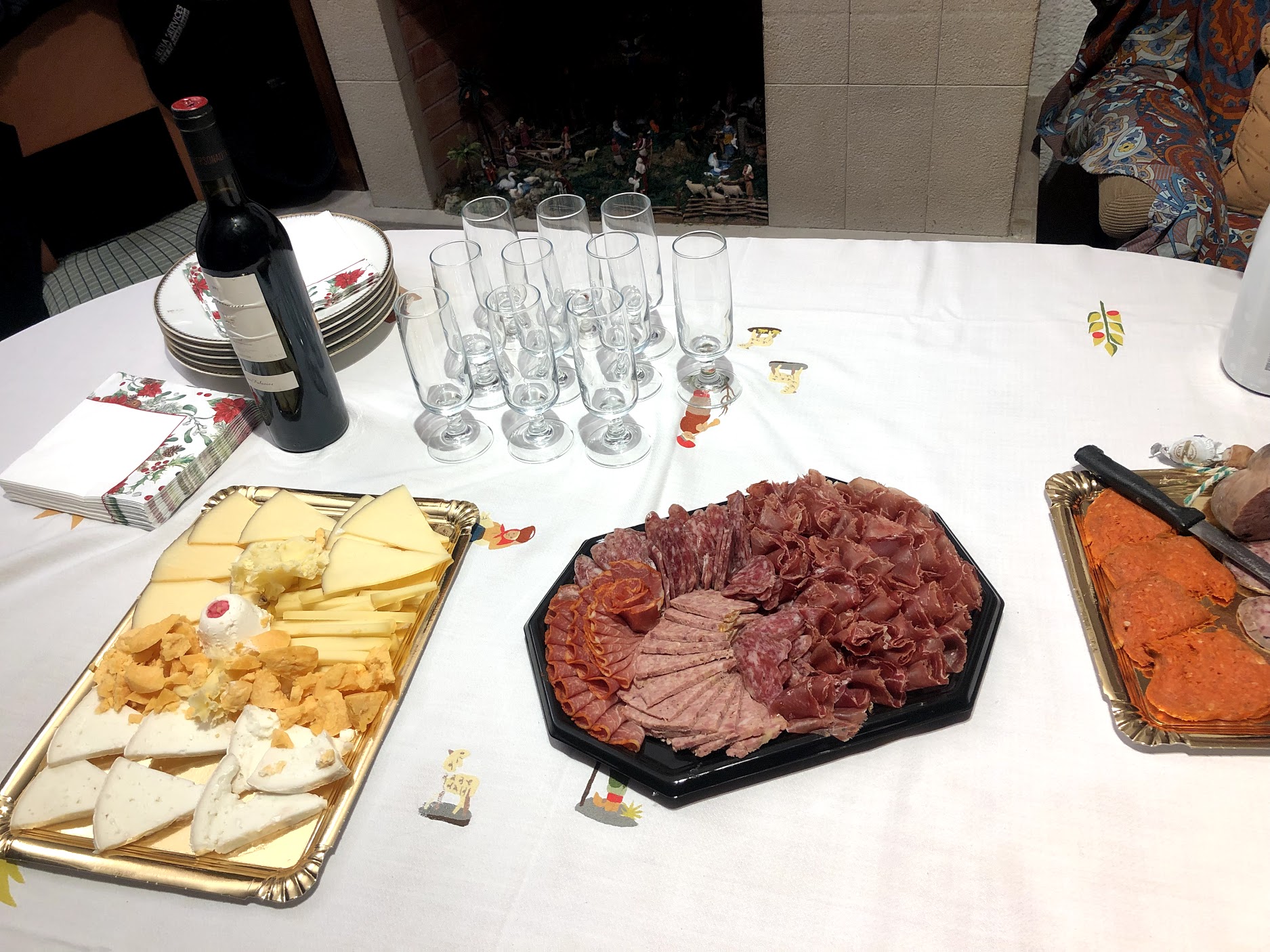Around this time two years ago, I was exploring Spain and all it has to offer, from the mouth-watering tapas to the breathtaking sites and scenes. While Barcelona was incredible, there’s one little beach town just an hour south of the city that most people don’t know about, but should. It’s called Tarragona, and this just so happens to be where many of my ancestors are from. My grandma grew up in Tarragona, so I was without a doubt excited to visit and meet my relatives who still live there today. I knew it was going to be beautiful, of course, but Tarragona blew any ideas I had of it beforehand out of the water.
It’s truly one place that every traveler making their way through Spain should stop and visit. To give you a little taste of the beach town off the beaten path, here are nine things to do in Tarragona, Spain.
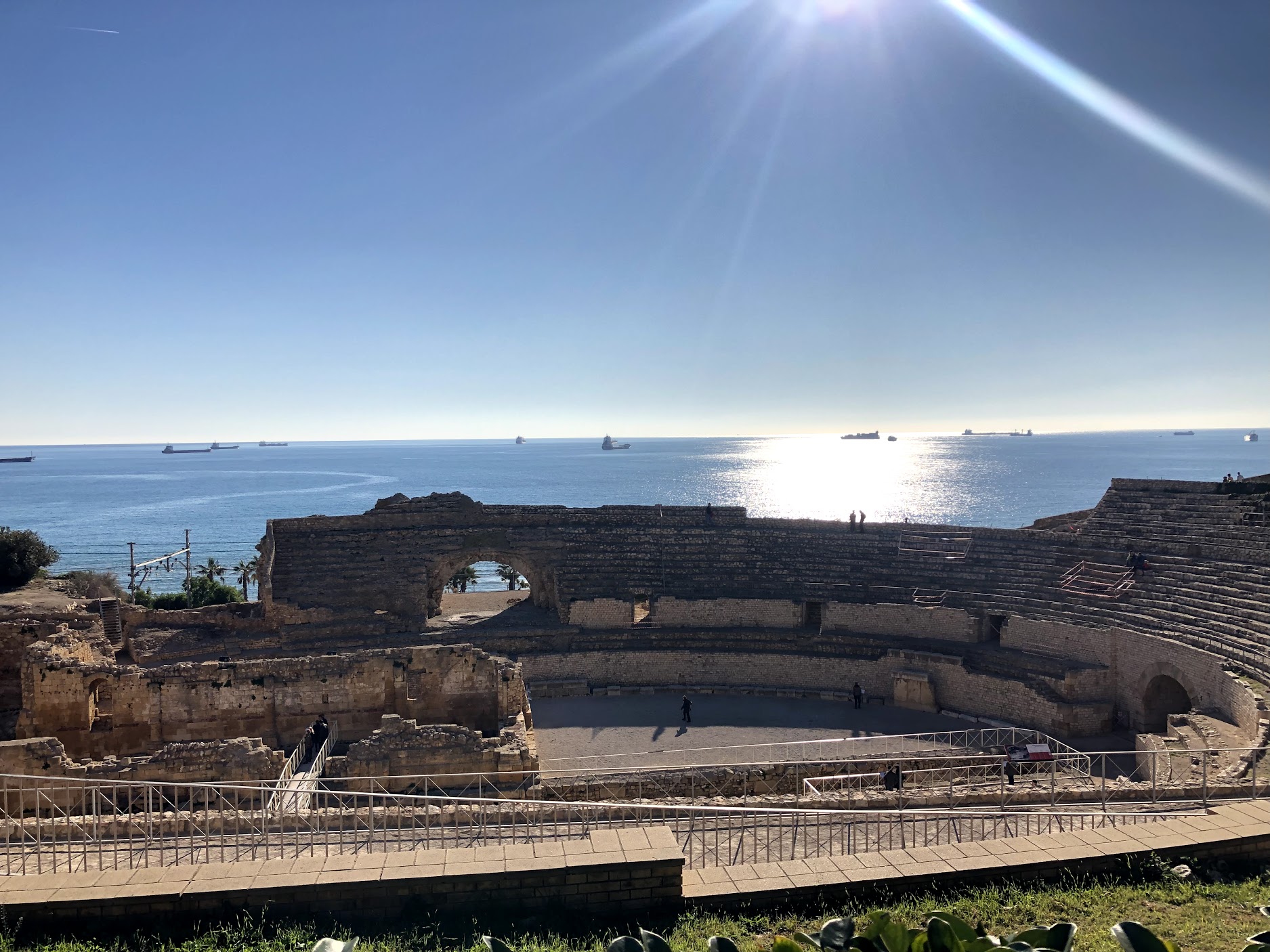

The Tarragona Amphitheater
By far my favorite attraction of Tarragona is the Tarragona Amphitheater, and any history junkie would probably agree with me. Before Tarragona became what it is today, it was known as Tarraco, which was home to the first Roman colony in Spain founded in 218 BC. Today, several Roman structures, such as the amphitheater are still standing and preserved today. Locals and tourists alike can still take tours and walk around the incredible, ancient pieces of history.
The amphitheater is on a coastal hillside of town that overlooks the vast Mediterranean Sea. Guests are able to wander freely around the structure – from the stadium seats that used to fit 12,000 spectators to the underground prison cells and cages for animals to be fought on the arena grounds for entertainment. Walking on the floor of the arena where gladiators used to fight to the death in front of screaming fans was truly a surreal moment for me. That was thousands of years ago, and now I was standing on the same floor in which these Roman characters did. That’s pretty freaking cool if you ask me!
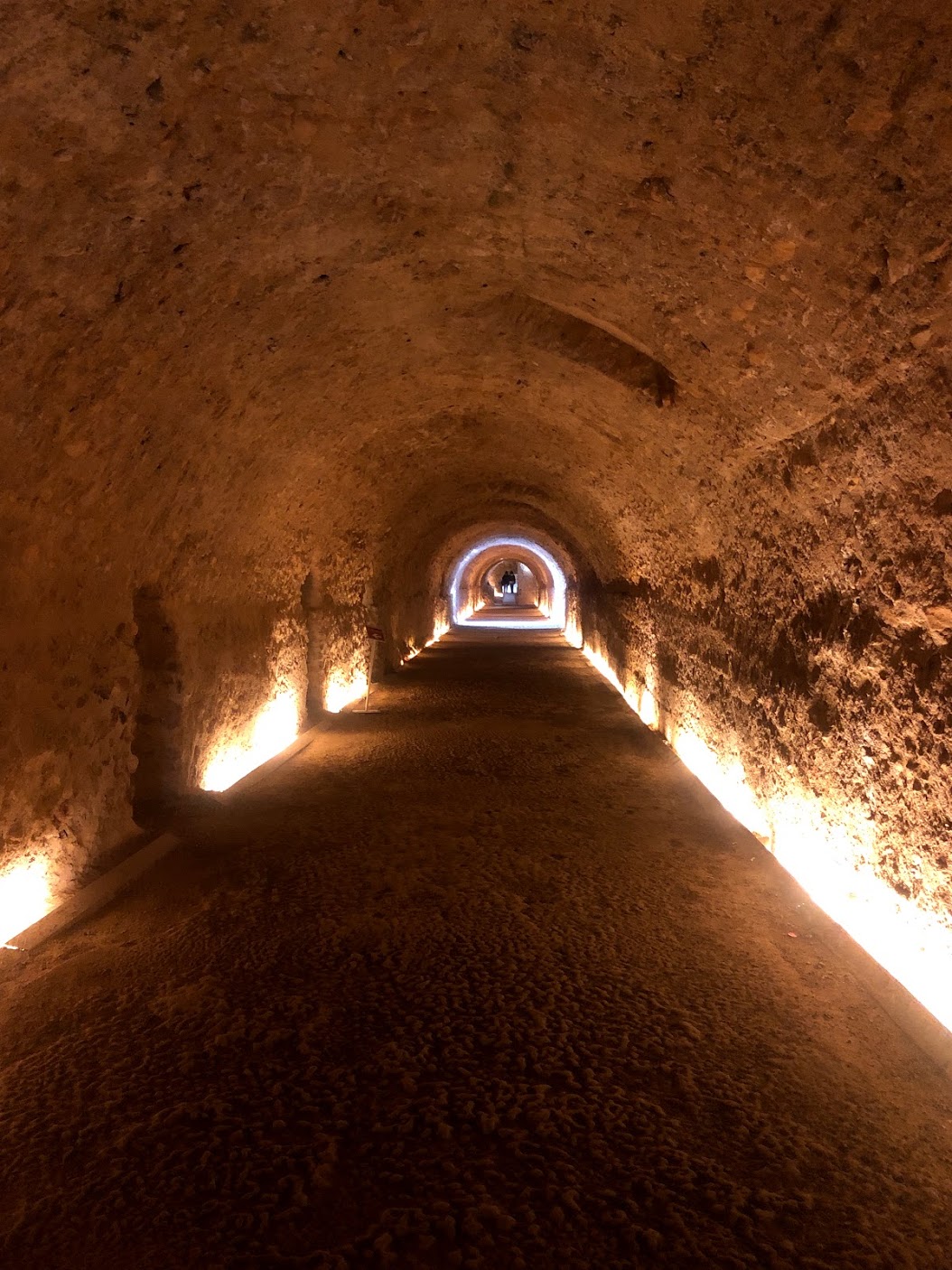
Roman Circus and Praetorium
Just a short walk from the amphitheater lies other Roman ruins known as the Praetorium and the Roman Circus. The Roman Circus was another entertainment center of the ancient city where horse-drawn chariot races used to take place, and it’s supposedly the best-preserved circus in the Western world. With a capacity of approximately 30,000, the Circus stretched 325 by 115 meters long, and you can now walk through what is left of the stands and vaults of the structure.
The Circus is attached to the Praetorium, which is a tower of stairs that led to underground tunnels and passageways for citizens to get to the political center of the city known as the Provincial Forum. However, the Praetorium was converted into a palace for monarchs, and then eventually a prison.
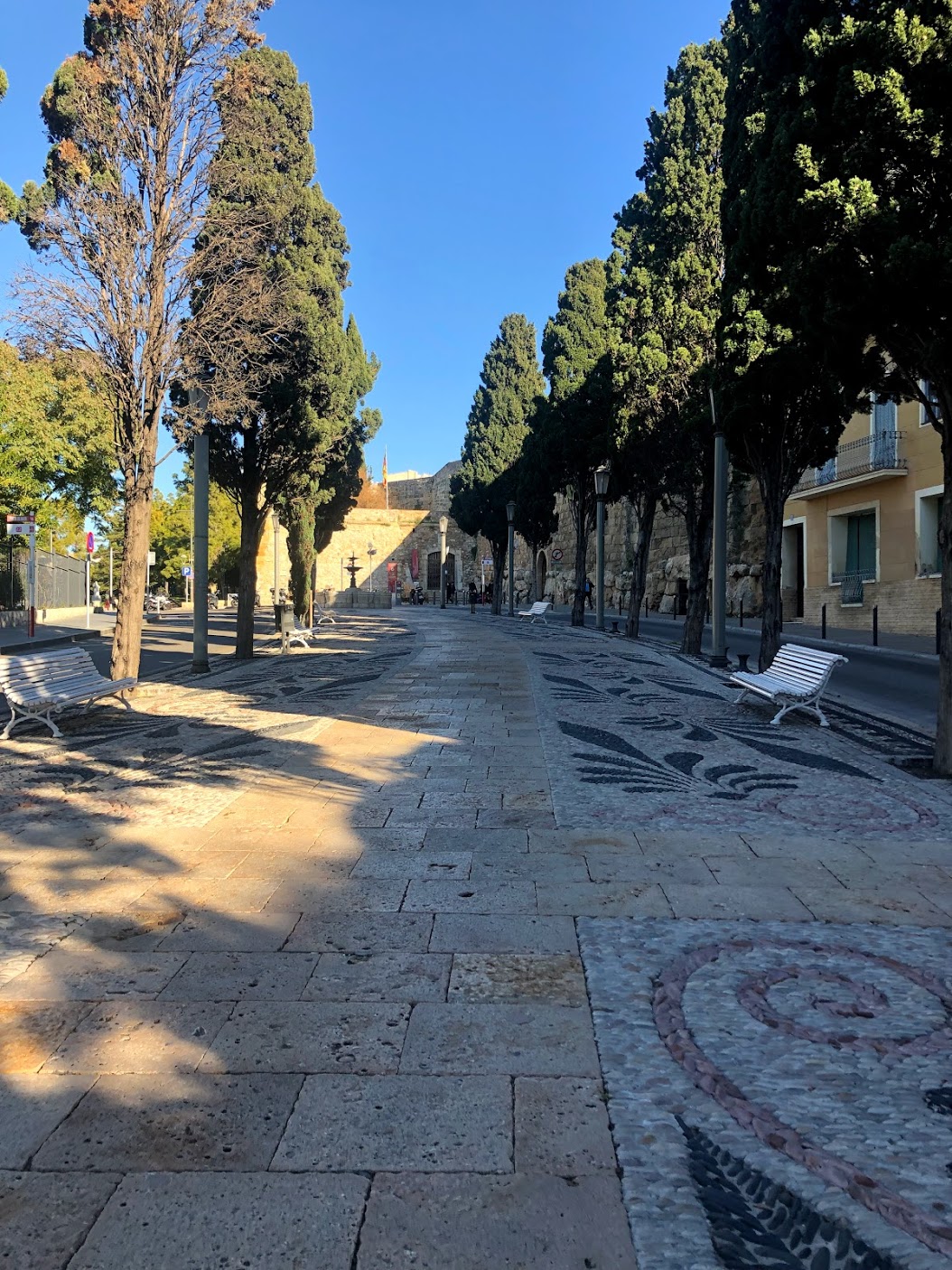
Walk La Rambla
“La Rambla” refers to the long pedestrian walkways that are common in most cities in Spain. In Tarragona, la rambla stretches through the main area of town, where you’ll find a variety of shops, restaurants, and bars. Oftentimes, there are also unique artisans and vendors spread out along the walkway. I spent pretty much every morning strolling along la rambla, purusing the stands for souvenirs to take home.
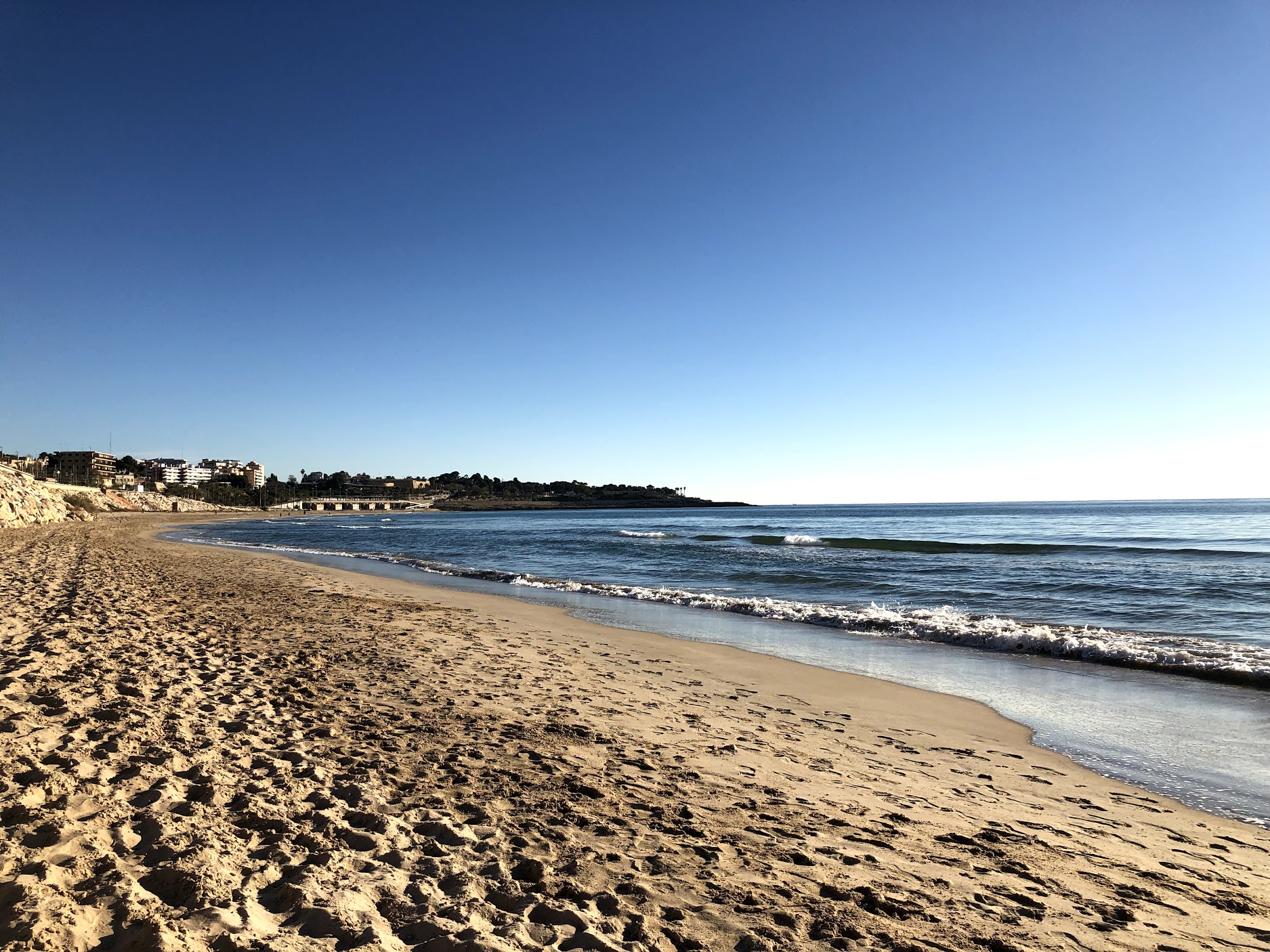
Playa El Miracle
Another part of my daily morning routine while in Tarragona was walking down to the beach to dip my toes in the water and take a walk in the sand. La rambla actually leads straight to a cliff over looking the Playa el Miracle, which is a truly breathtaking sight. To the side of the cliff you’ll find a walkway that leads you all the way down to the sand. This beach, at least in the winter time when I went, is fairly quiet and relaxing to lounge on.
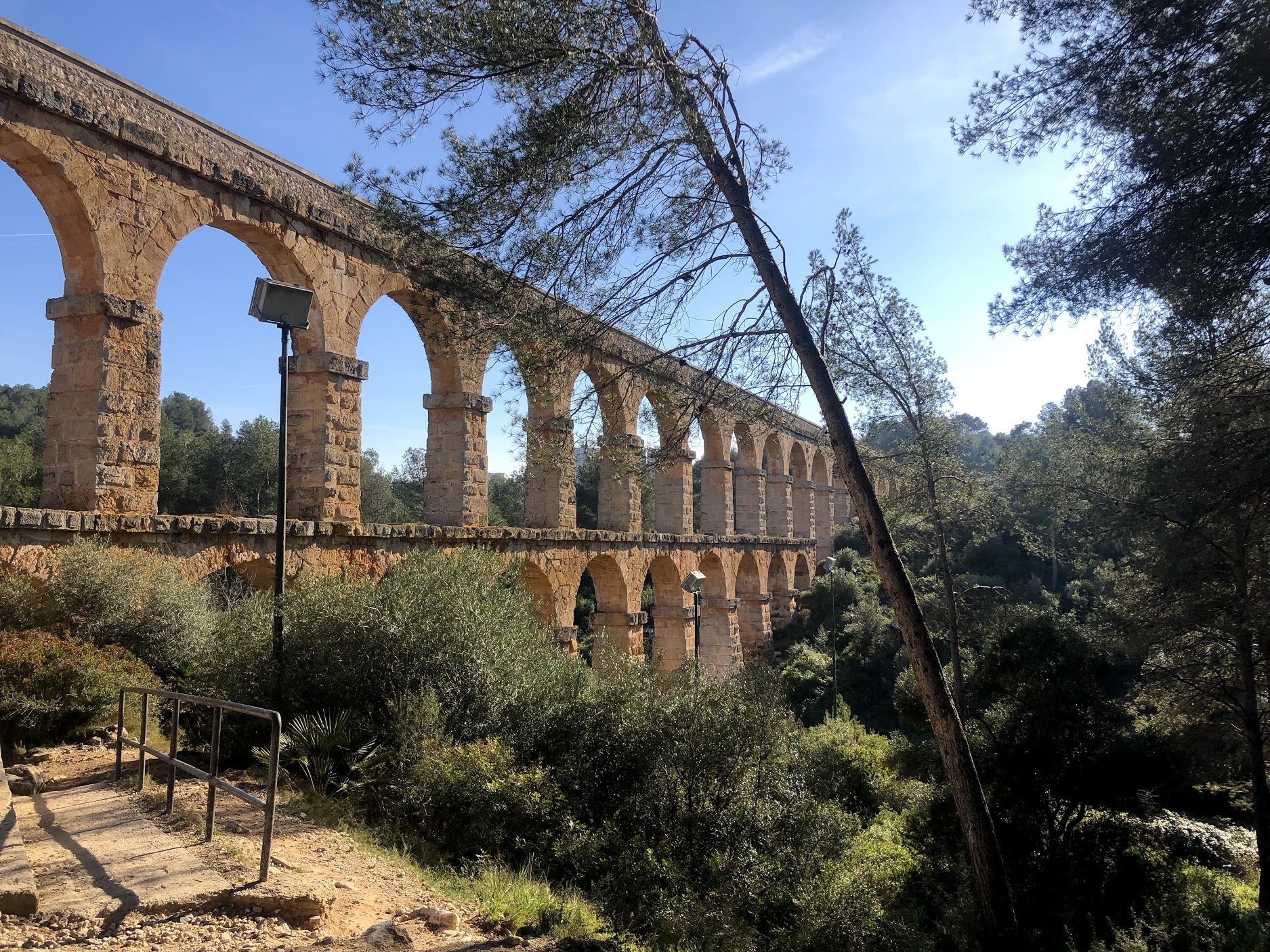
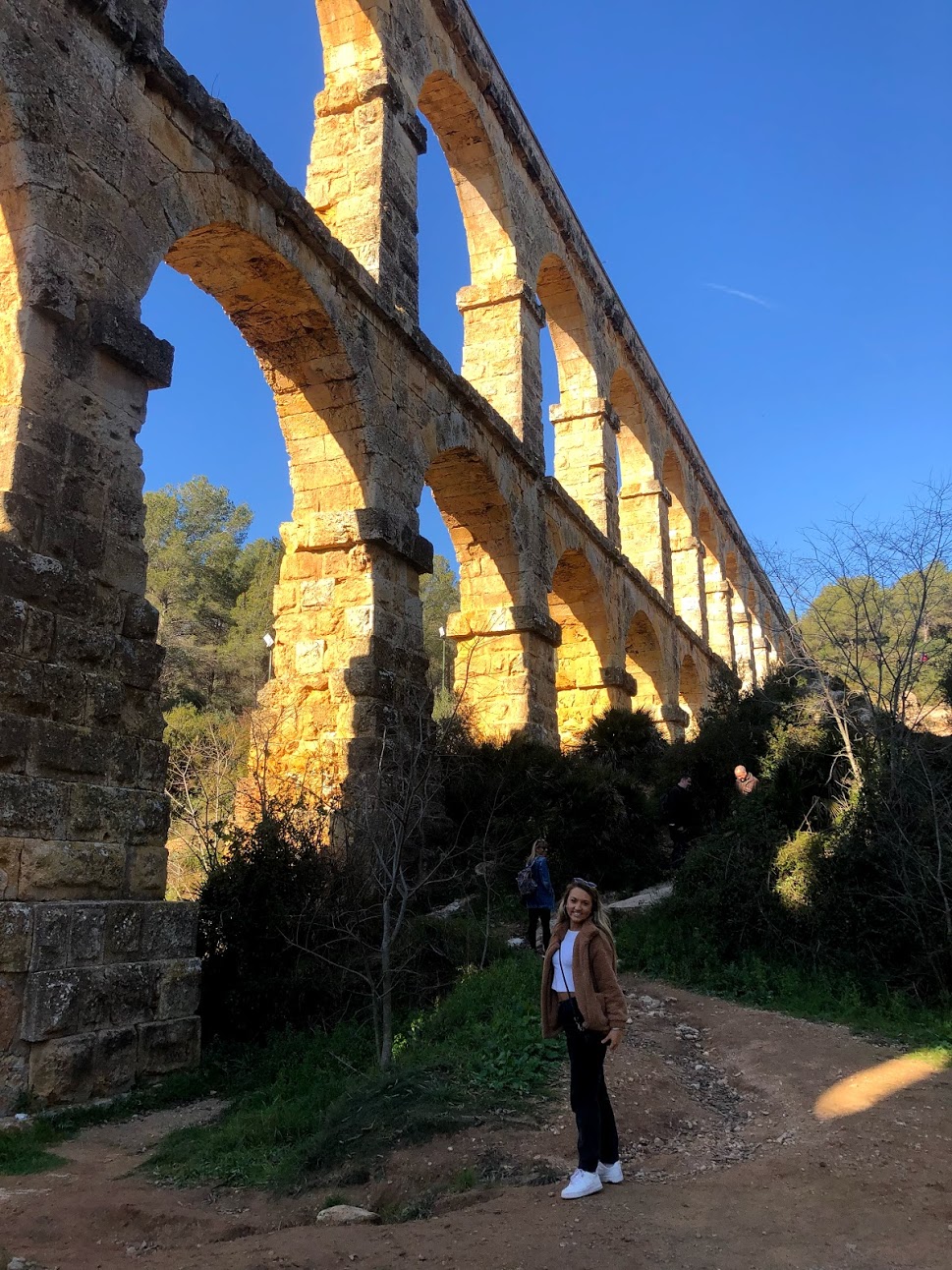
Les Ferreres Aqueduct
As if the Roman ruins in town weren’t enough, the Les Ferreres Aqueduct is another ancient structure just a 15 minute drive from the heart of Tarragona. This magnificent, 27-meter high fixture is a bridge built in the first century AD that was used to supply the city with water from the Francolí River. The portion of it that still stands today is 217 meters long and about 2 meters wide, so if you’re brave enough, you can walk across the remains of the bridge. While hights aren’t necessarily my thing, the journey across the bride is well worth the view from the other side.
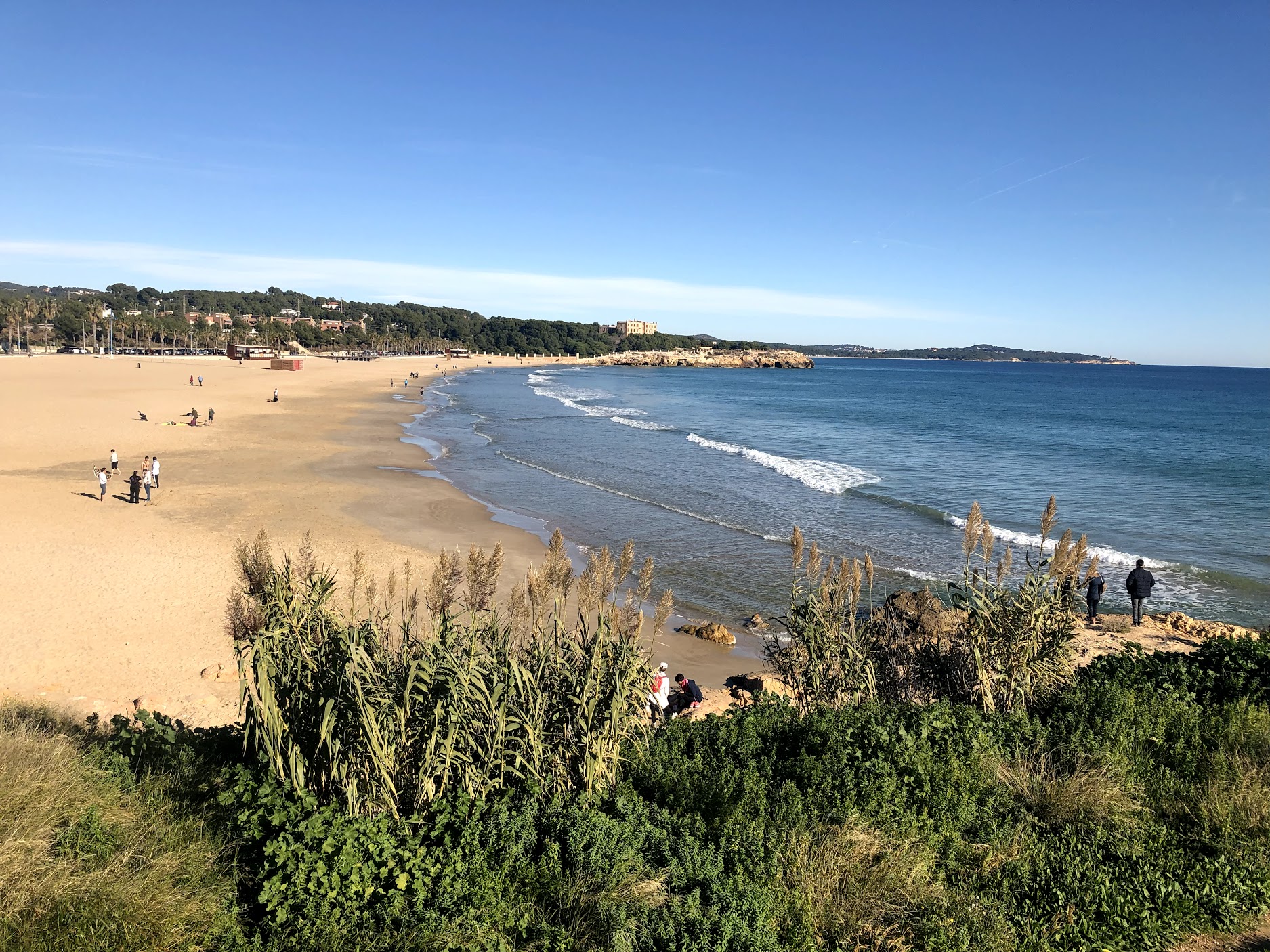
Playa l’Arrabassada
A short 5-minute drive from town is the Playa I’Arrasbassada, which is a bit more lively than Playa el Miracle, especially during summer. Here, you’ll find a small boardwalk filled with beachgoers walking and kids skateboarding, a plethora of bungalow-like restaurants in the sand that offer deliciously fresh cups of sangria and yummy tapas, and a stunning view of the ocean and adjacent cliffs.

Eat, Eat, Then Eat Some More
Need I say more? The food in Tarragona is mouthwatering with every bite, to say the least. You’ll find endless options offering tapas of all kinds around town – I ate more ham and cheese croquettes than I’m proud to say. My favorite restaurant we went to during my visit was El Pósit, located in the Marina Port Tarraco. The marina is where you’ll find yachts parked on the water and a boardwalk lined with restaurants. El Pósit is ideal for a nice, sit-down meal. And let me tell you, the menu will not disappoint. It features seafood and paella galore, with a dessert menu that will have you coming back for more.

Bar Hop
If there’s one thing that spaniards know how to do well, it’s drink. I may or may not have had sangria with breakfast one too many times on this trip. Everywhere you turn, you’ll find a bar with the tastiest Moscow mules and wine Tarragona has to offer. For some nightlife fun, go to the Plaça de la Font, a busy town square where there are several bars with outdoor terraces, making the perfect spot for a few casual drinks. If you’re trying to stay out until the sun comes up (when in Rome, right?), there are bars with more of a lively club environment like Totem Café to keep your night going strong.
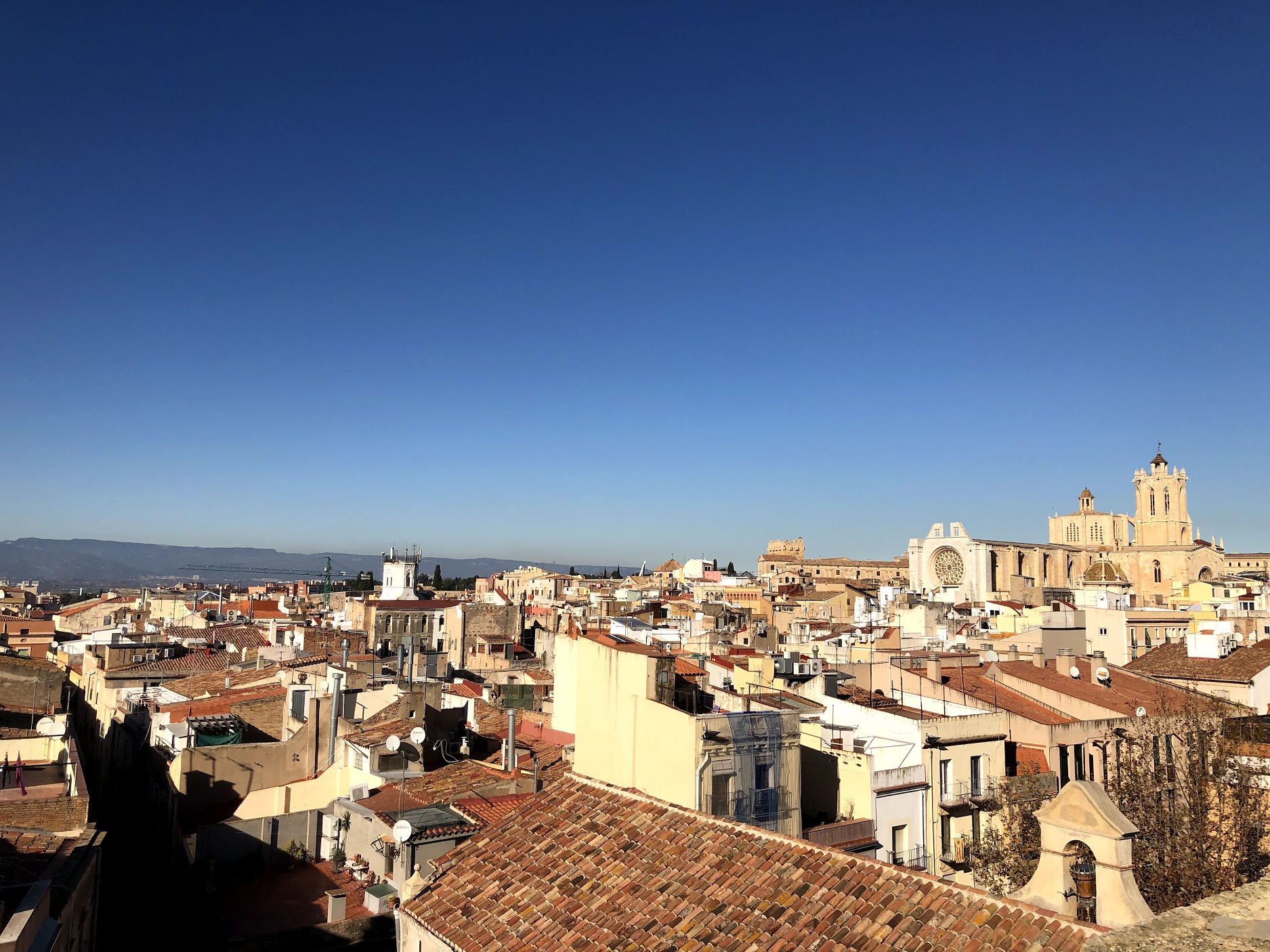

Celebrate Tradition
Tarragona is in the Catalan region of Spain, where they take tradition very seriously. Let me tell you, the traditions are so much fun to celebrate! For starters, Tarragona holds an annual, 10-day long celebration in September called Santa Tecla. Throughout the festival, you can find drunk locals dancing in the street, traditional live music, delectable food, puppet shows, fireworks, and human towers – human towers are a long-lived tradition in which men literally stack themselves on top of each other in a competition to see how high they can get. There’s even a statue (pictured above) in the middle of the rambla walkway that showcases this dangerously silly tradition.
Writing this blog post seriously has me missing the many once in a lifetime spectacles and memories Tarragona has to offer, and I highly recommend adding it to your travel bucket list ASAP.
Xo, Chloe

